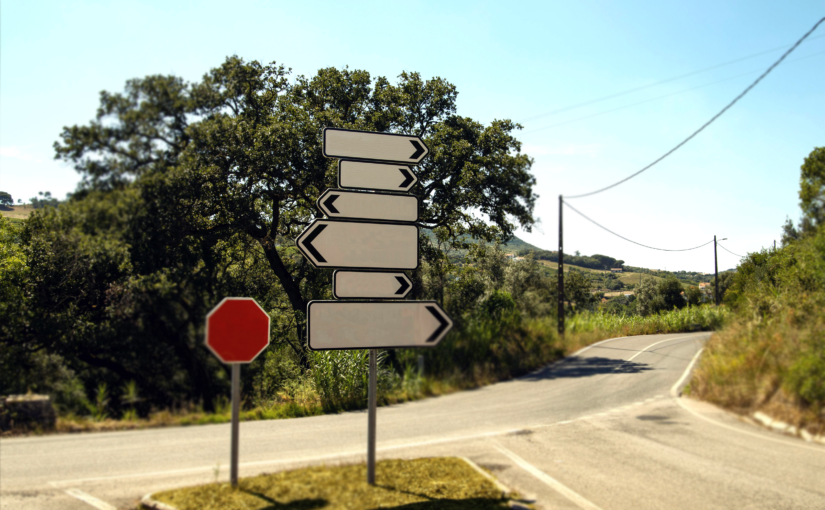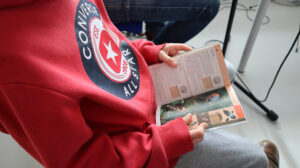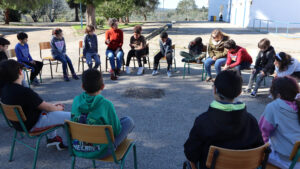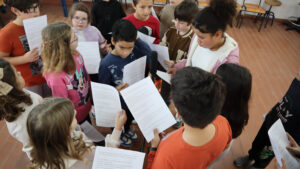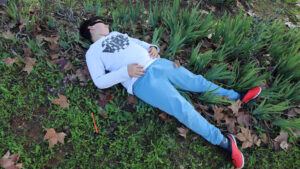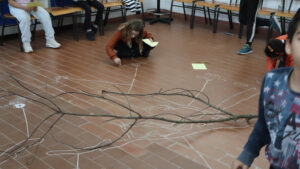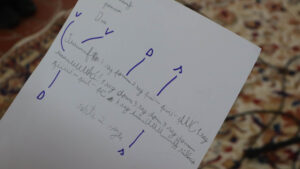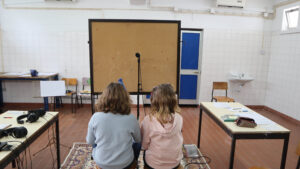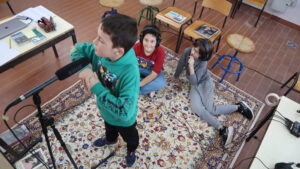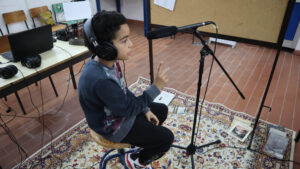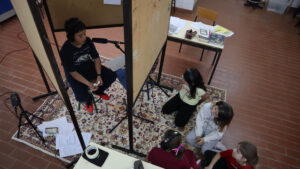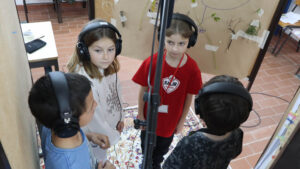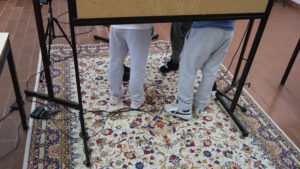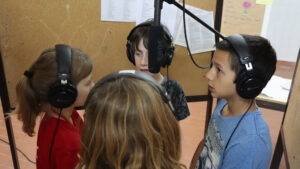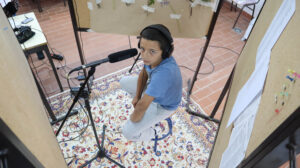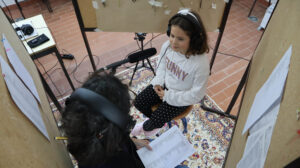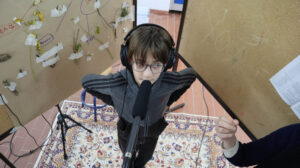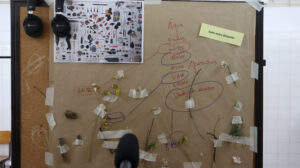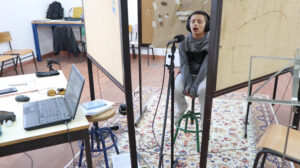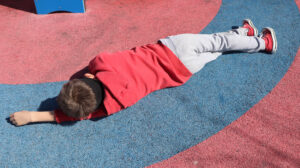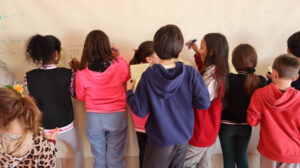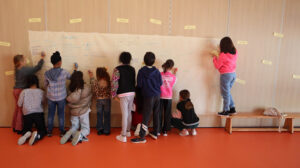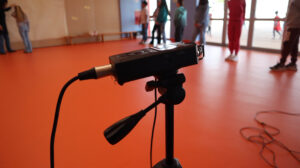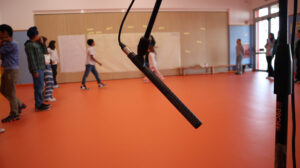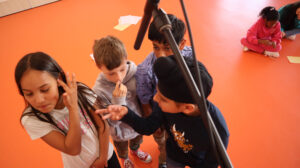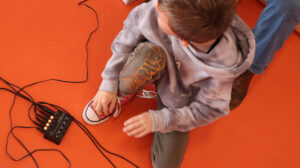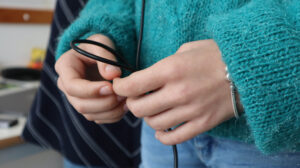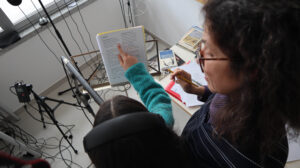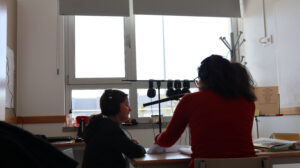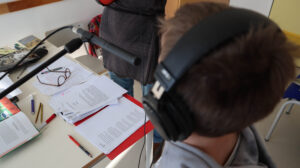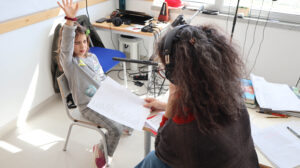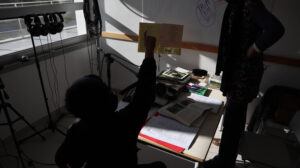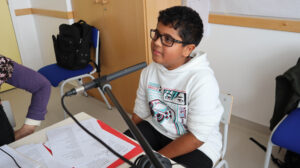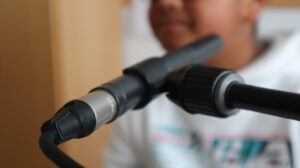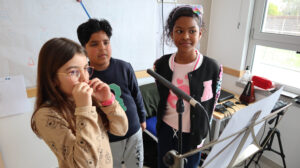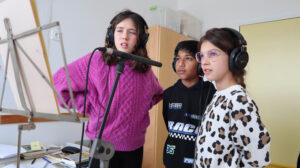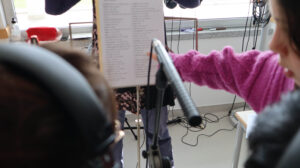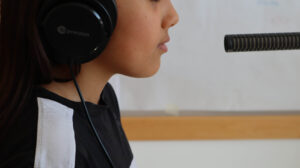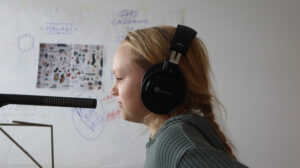Sound pieces + Installation by: Mónica Samões e José Pelicano Premiere: 19 JUN 2024 - Centro Escolar da Luz, Lagos 25 JUN 2024 - Escola Básica Professor Sebastião José Pires Teixeira, Salir - Loulé
Cadernos de Campo are sound pieces created with children about the Landscape and the Natural World.
Made during a school year with two classes from two primary schools in Lagos and Loulé, these pieces – created by Mónica Samões and José Pelicano with the sound artist and musician Marco Maril – are a poetic and acoustic drift where the children themselves are the landscape, and where their multidimensional and free perception of the world meets the ancestral knowledge of rural booklets, the technical knowledge of science books, folk tales and impressionistic perceptions of the landscape of writers, poets and geographers, and also with names of lands and places, birds and plants, winds and seas.
A polyphonic and infinite narration structure where words become a listening place of the landscape.
SOUND PIECE #1 – Luz
With: Class 21 / 3rd and 4th grade of Centro Escolar da Luz (Luz – Lagos)
Anabel Ricardo, Anastasiia Boiko, Clara Marlowe Unio, Cristyn Mendoza, Dexter Stubbings, Dinis Cardoso, Heitor Ferreira, Livia Lima, Maria Cardoso, Mia Schneider, Mia Fonseca, Ranjot Singh, Ravjot Singh, Rudra Ankur Patel, Valentina Araújo, Ved Patel, Veronika Sekret, Virat Saini
SOUND PIECE #2 – Salir
With: 4th grade class of Professor Sebastião José Pires Teixeira Basic School (Salir – Loulé)
Andrea Mejias, Diego Rocha, Duarte José, João Silva, Júlia Vilhena, Madalena Ferreira, Marcolino Djaló, Mariana Rocha, Mateus Cavaco, Miguel Silva, Miguel Tomáz, Nísia Guerreiro, Raquel Ramos, Salvador Loureiro, Samuel Sarandão, Simão Faísca, Tomás Prata, Vicente Martins, Yara Martins and with Lourenço Amaro (3rd grade class)
Concept, Direction, Dramaturgy: Mónica Samões and José Pelicano
Sound Recording and Installation: José Pelicano
Editing, Sound Design and Creation: Marco Maril
Executive Producer: Mónica Samões, Andrea Sozzi
Coordination and Support: Teacher Cátia Coelho, Teacher Joana Queirós
Production: casaBranca
Co-production: Câmara Municipal de Lagos, Câmara Municipal de Loulé Thanks to: Cláudia Bento, Sílvia Barrocal, Elisa Almeida, Jorge Reis, Pedro Campos and all the auxiliary staff of Centro Escolar da Luz and Escola Básica Professor Sebastião José Pires Teixeira
Special thanks to all the children who took part in the project and to their teachers Joana Queirós and Cátia Coelho.
casaBranca is a structure funded by Ministério da Cultura – Direcção Geral das Artes
Central to the conceptual framework of this project is the idea of a Field Notebook, an informal instrument and device for notation and recording of the environment, traditionally used in the most diverse areas of knowledge – geography, biology, literature, visual arts, anthropology, ethnography, among others.
As a tool for questioning and researching the world, the field notebook sits on the border between the documentary and the poetic, the scientific and the literary, and, more than just a way to ‘photograph’ the reality, it is a way of subjectively interpret what is observed and registered.
Taking the search for this subjective space as its direction, and the Natural World and the Landscape simultaneously as theme and territory of exploration, Field Notebooks offered a research process carried out with a group of children based on the sound expression of what surrounds us – from the natural world to the literary world, and all the intersections that lie in between – organizing all the different collected materials like a field notebook – collections, notes, juxtapositions, collages, lists – creating thus different possibilities of reading and of complexity, both poetically and structurally, and using in this process several tools from literature, dramaturgical writing, music, sound manipulation and other acoustic impulses that generate meaning.
Drawing from various exploratory processes and active listening, some of the main working strategies relied on reading as a tool for exploring and interpreting reality – and its registration and audio recording.
The project was developed in a school context during the 23-24 academic year, with small studios being set up in the schools for the recording work.
It included several workshops for exploration, thought and discovery, which culminated in the creation of two distinct sound pieces – objects based on sound, words and language, which combine reading and literature with sound experimentation.
